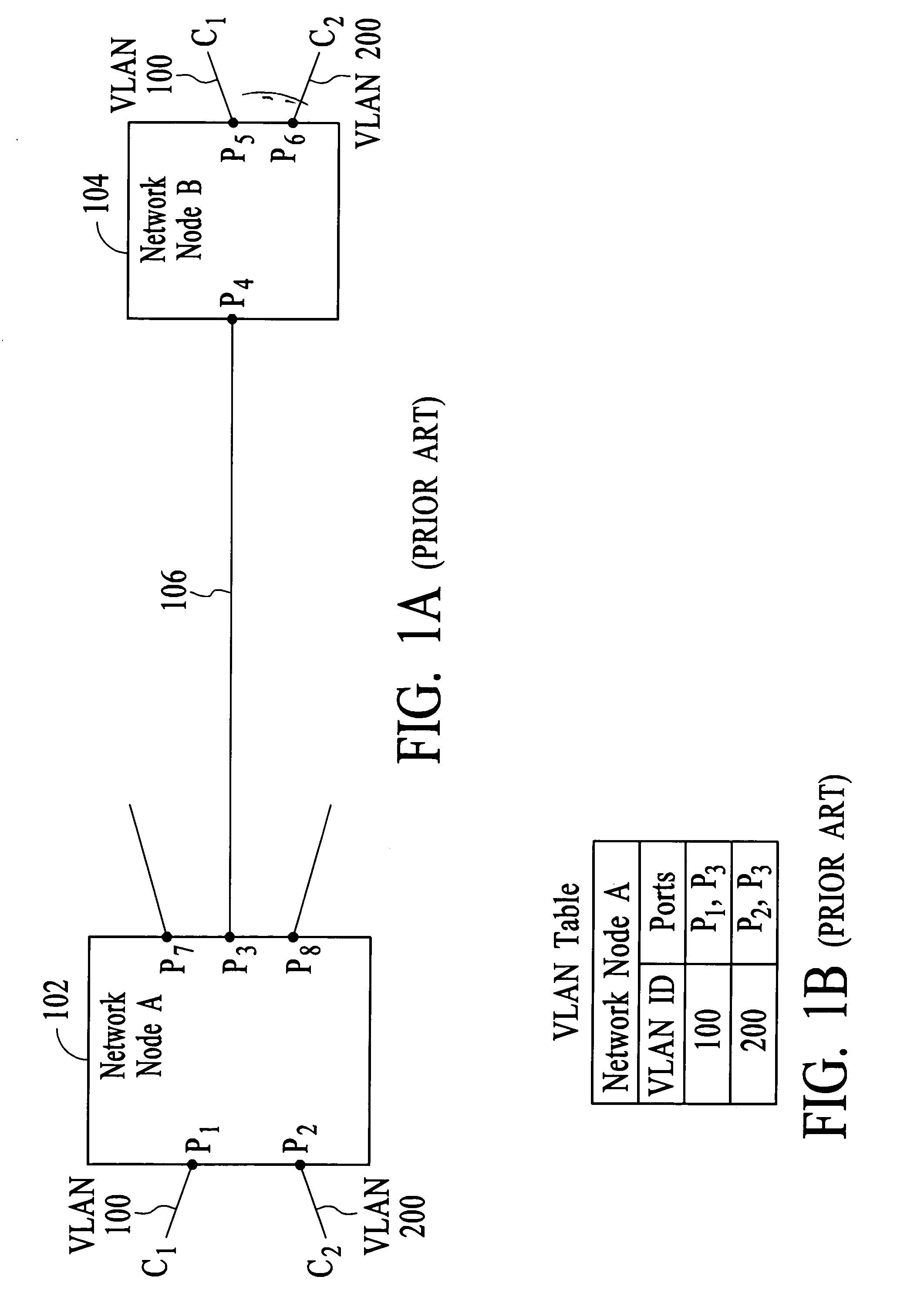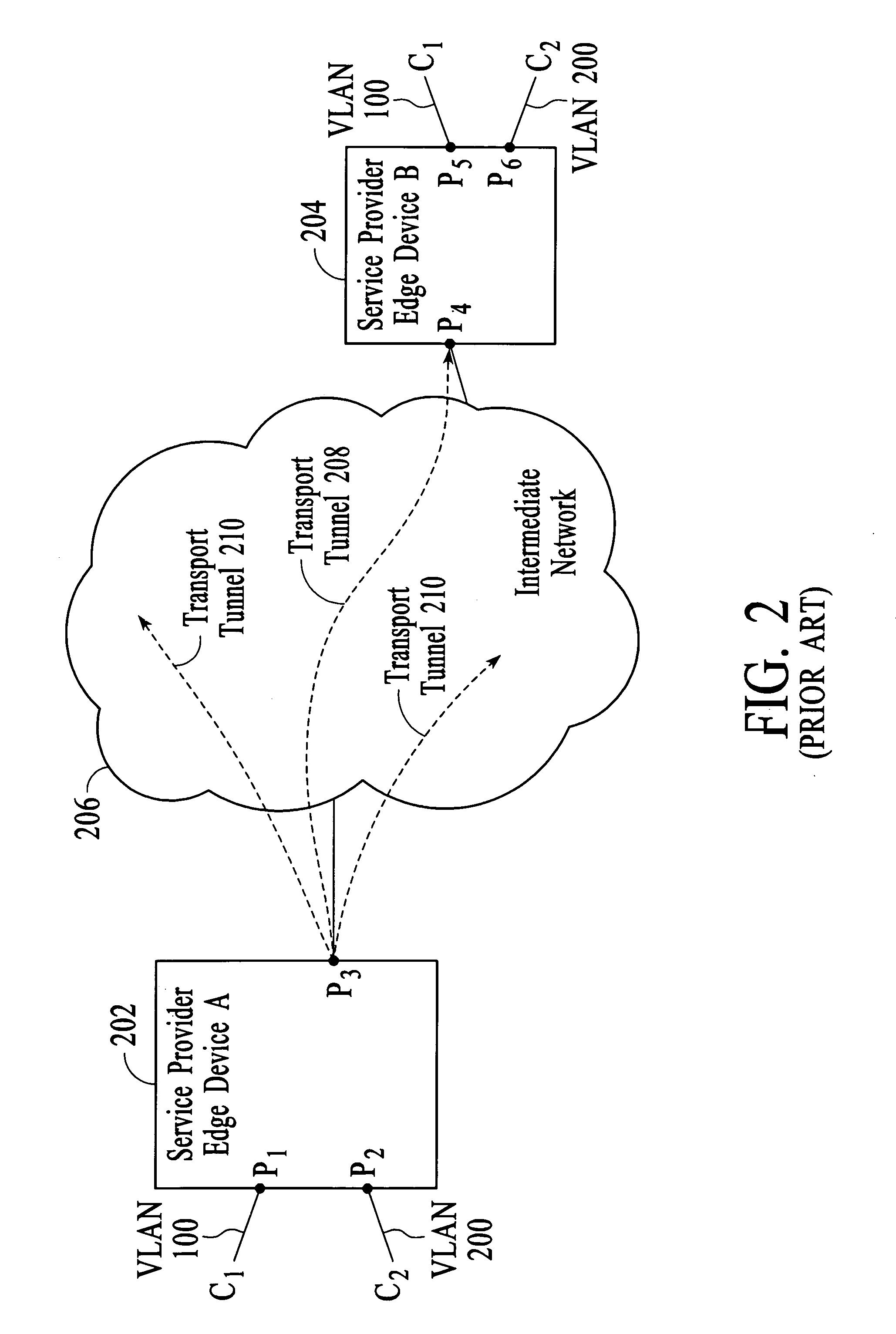Managing traffic in a multiport network node using logical ports
a network node and traffic management technology, applied in data switching networks, frequency-division multiplexes, instruments, etc., can solve problems such as more difficult tasks, less traffic, and less traffic sent by the assigned port of the vlan
- Summary
- Abstract
- Description
- Claims
- Application Information
AI Technical Summary
Benefits of technology
Problems solved by technology
Method used
Image
Examples
Embodiment Construction
[0037]FIG. 3 depicts a network in which customer locations are connected via two service provider edge devices 302 and 304 and an intermediate network 306. In the example, customer C1 is connected to service provider edge device (SPED) A at port P1 and to SPED B at port P5. Customer C1 wants to communicate between its two locations using VLAN 100. Customer C2 is connected to SPED A at port P2 and to SPED B at port P6. Customer C2 wants to communicate between its two locations using VLAN 200. In the example of FIG. 3, the intermediate network supports “stacked VLAN tunneling” and is referred to as a “stacked VLAN domain.” In an embodiment, stacked VLAN tunneling involves encapsulating a first packet that is formatted according to the IEEE 802.1Q protocol (referred to herein as an “802.1Q packet”) into a second 802.1Q packet. The header of the second 802.1Q packet (i.e., the outer packet header) is used to forward the packet through the stacked VLAN domain and is removed at the far-en...
PUM
 Login to View More
Login to View More Abstract
Description
Claims
Application Information
 Login to View More
Login to View More - R&D
- Intellectual Property
- Life Sciences
- Materials
- Tech Scout
- Unparalleled Data Quality
- Higher Quality Content
- 60% Fewer Hallucinations
Browse by: Latest US Patents, China's latest patents, Technical Efficacy Thesaurus, Application Domain, Technology Topic, Popular Technical Reports.
© 2025 PatSnap. All rights reserved.Legal|Privacy policy|Modern Slavery Act Transparency Statement|Sitemap|About US| Contact US: help@patsnap.com



